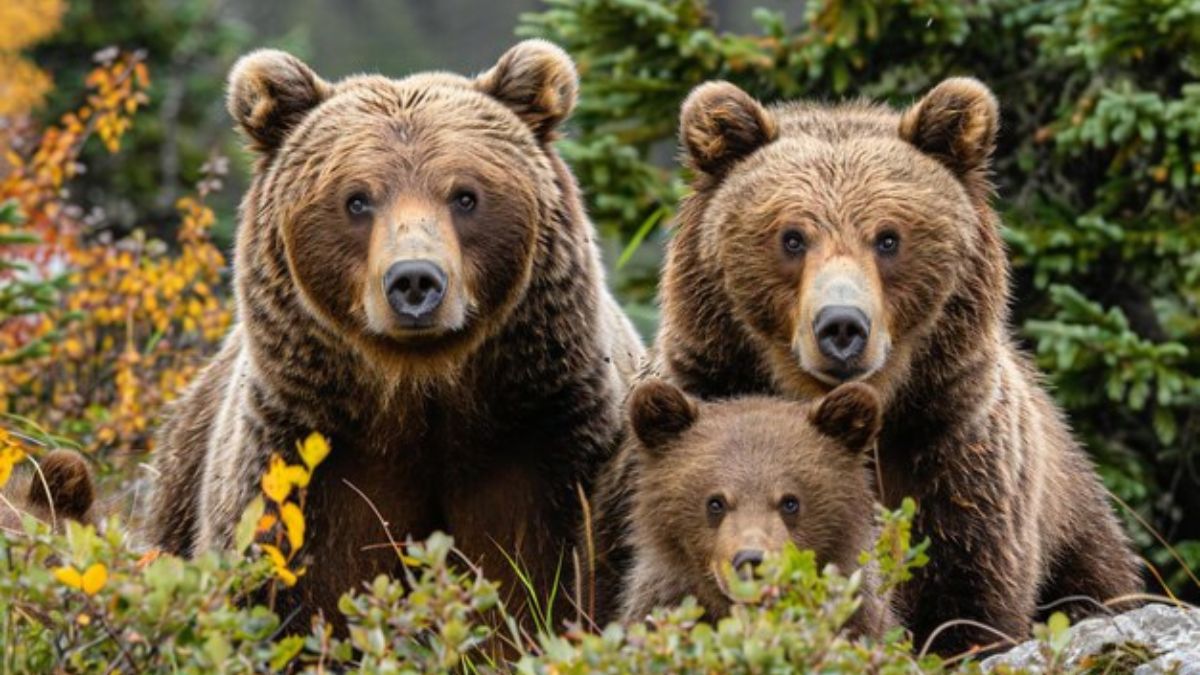Throughout history, animals have been used as symbols in cultures, countries, and cities worldwide. Among these animals, bears hold a unique place, representing strength, resilience, and sometimes, a deeper connection with nature. This article explores why bears are such a popular symbol across different regions and what they stand for in cultural and civic life.
The Bear as a Symbol of Strength and Power
Bears are powerful creatures, known for their physical strength and commanding presence. In many countries, they have been used to symbolize might, power, and leadership. This is especially true in regions where bears once roamed or where they continue to exist in the wild.
In Russia, for instance, the bear is an unofficial national symbol. Historically, the animal represents both the strength and vastness of the country. During the Cold War, the bear became a widely recognized metaphor for the Soviet Union’s might. The Russian bear has often been depicted in literature, political cartoons, and even modern media, embodying the rugged endurance and fierceness of the nation.
Germany is another country where the bear plays a prominent role. The city of Berlin, Germany’s capital, uses the bear as its emblem. The bear symbolizes Berlin’s endurance and strength, surviving numerous hardships over the centuries, from wars to political turmoil. It stands proud as a reflection of the city’s ability to persevere through adversity.
Bears in Indigenous Cultures
Bears also feature heavily in the symbolism of various Indigenous cultures, particularly in North America. Native American tribes, such as the Lakota, Cherokee, and Cree, revere bears as sacred animals. They view the bear as a symbol of protection, bravery, and healing. In many Indigenous stories and legends, the bear is often seen as a mediator between humans and the natural world, embodying a spiritual force.
For the Indigenous peoples of the Arctic, particularly the Inuit, the bear—specifically the polar bear—represents survival in harsh conditions. The bear’s ability to thrive in an unforgiving environment makes it a symbol of resilience, adaptation, and respect for nature’s power.
Civic Symbols and Heraldry
Beyond nations, many cities and municipalities have adopted the bear as a part of their civic identity. In some cases, the bear is integrated into heraldry, coats of arms, and flags, adding to its importance as a symbol of regional pride.
Switzerland’s capital, Bern, derives its name from the German word for bear. The bear appears on the city’s flag and coat of arms and has been a key symbol of the city since the Middle Ages. Legend has it that the founder of Bern, Berthold V, Duke of Zähringen, vowed to name the city after the first animal he encountered during a hunt— which turned out to be a bear. Since then, the animal has been a central part of the city’s identity, appearing in statues, emblems, and even in a bear park, where live bears are kept as a tribute to this historic connection.
In Madrid, Spain, the bear is another iconic symbol. The statue of “El Oso y El Madroño” (The Bear and the Strawberry Tree) is located in the city center and has become one of the most recognizable images of Madrid. The bear symbolizes strength, while the tree represents fertility and growth, together reflecting Madrid’s rich history and prosperity.
The Cultural Significance of Bears
Bears often carry multiple meanings depending on the culture. In some contexts, they represent danger and unpredictability, while in others, they are seen as nurturing and protective. The bear’s dual nature—both a fearsome predator and a caring parent—adds to its symbolic richness.
In folklore and mythology, bears are often depicted as wise, powerful creatures. In Norse mythology, for example, the bear is associated with berserkers, warriors who wore bear skins and channeled the bear’s rage in battle. In Celtic mythology, the bear goddess Artio was revered as a protector of wildlife and a symbol of fertility.
The duality of the bear—strong yet gentle—makes it a potent symbol for countries and cities that wish to project power, protection, and resilience, while also emphasizing care for their people and environment.
Bears in Art and “Dancing Bears” Painting
Bears have not only been significant in heraldry, mythology, and civic emblems but also in art. From ancient cave paintings to modern art, bears have captured the human imagination. They often represent a deep connection with nature, a sense of mystery, and primal power.
One such artistic depiction is “Dancing Bears“, a famous painting that showcases bears performing in human-like scenarios, reflecting a bygone era when these animals were trained for entertainment. The painting captures both the majesty of the bear and the tragic irony of its use in human spectacles. Art that features bears often seeks to convey their power and complexity, highlighting both their wildness and the ways in which humans have interacted with them throughout history.
Modern Interpretations and Environmental Conservation
Today, bears also serve as a symbol of environmental conservation. The plight of endangered bear species, such as the polar bear, has brought attention to issues of climate change and habitat loss. Organizations like the World Wildlife Fund (WWF) use the image of the bear as a rallying point for conservation efforts, signifying the need to protect these majestic creatures and their ecosystems.
In many cultures, the bear has transformed from a symbol of raw power to one of vulnerability. As habitats shrink and bear populations face the threat of extinction, bears have come to represent the delicate balance between human progress and the natural world.
Conclusion
Bears continue to be enduring symbols in many countries and cities around the world. Whether representing strength, resilience, or the need for conservation, they hold a significant place in cultural heritage, mythology, and even art. From the emblem of Berlin to the “Dancing Bears” painting, the bear’s image resonates with a message of power and protection, while also reminding us of our responsibility to preserve the natural world they embody.











